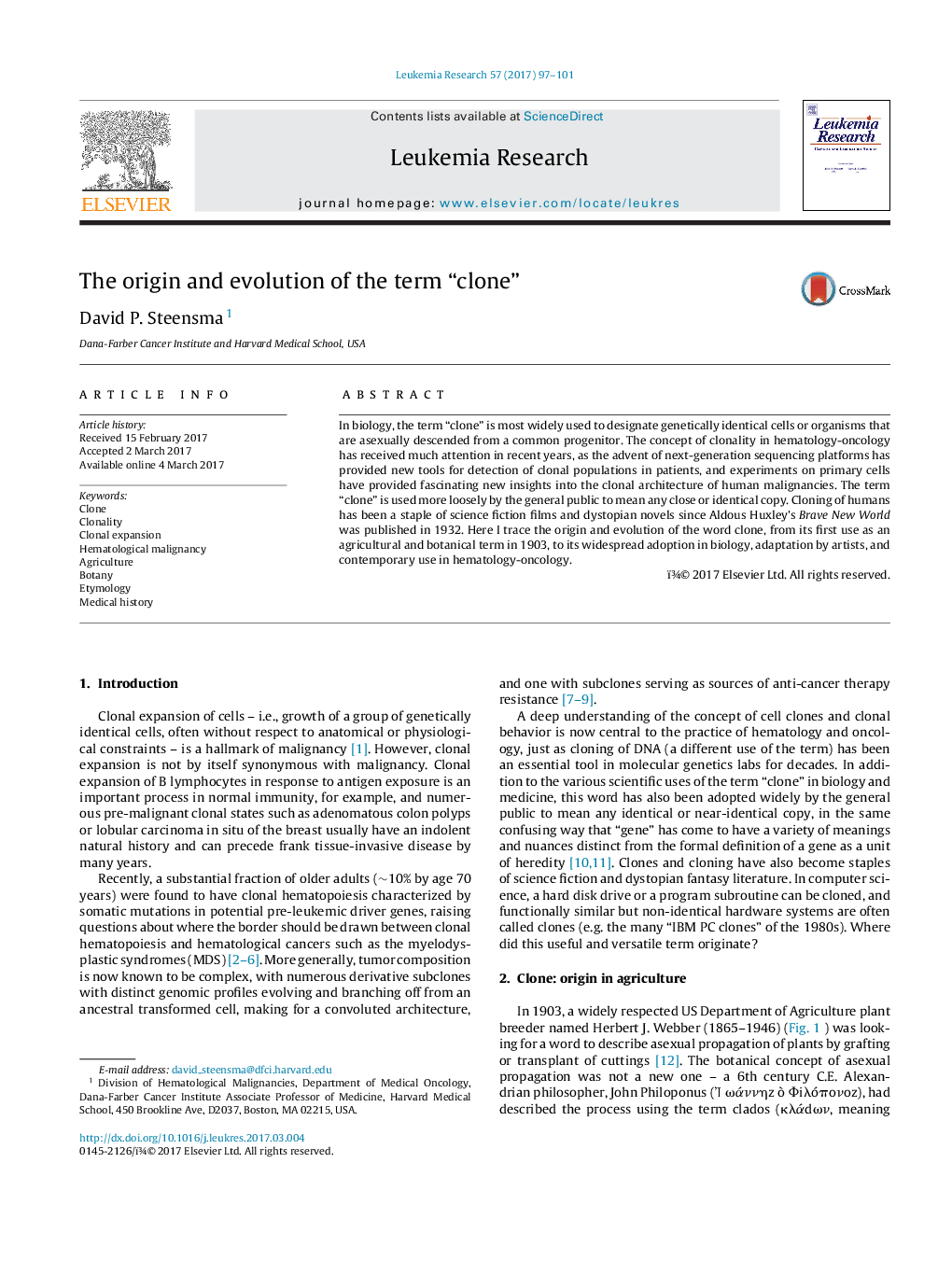| Article ID | Journal | Published Year | Pages | File Type |
|---|---|---|---|---|
| 5527889 | Leukemia Research | 2017 | 5 Pages |
In biology, the term “clone” is most widely used to designate genetically identical cells or organisms that are asexually descended from a common progenitor. The concept of clonality in hematology-oncology has received much attention in recent years, as the advent of next-generation sequencing platforms has provided new tools for detection of clonal populations in patients, and experiments on primary cells have provided fascinating new insights into the clonal architecture of human malignancies. The term “clone” is used more loosely by the general public to mean any close or identical copy. Cloning of humans has been a staple of science fiction films and dystopian novels since Aldous Huxley's Brave New World was published in 1932. Here I trace the origin and evolution of the word clone, from its first use as an agricultural and botanical term in 1903, to its widespread adoption in biology, adaptation by artists, and contemporary use in hematology-oncology.
